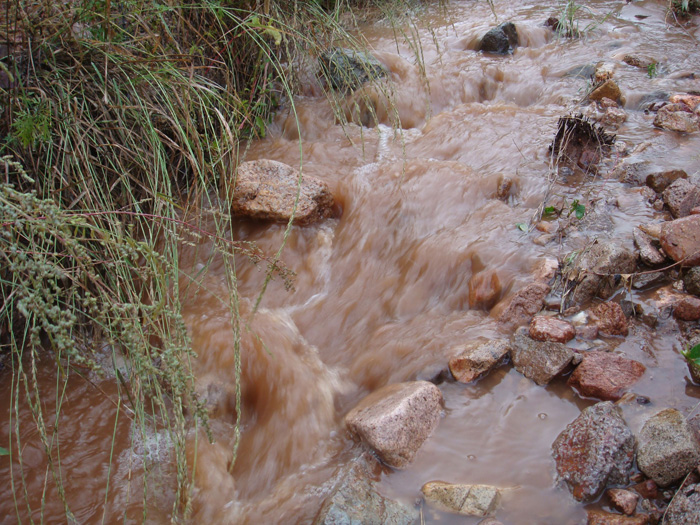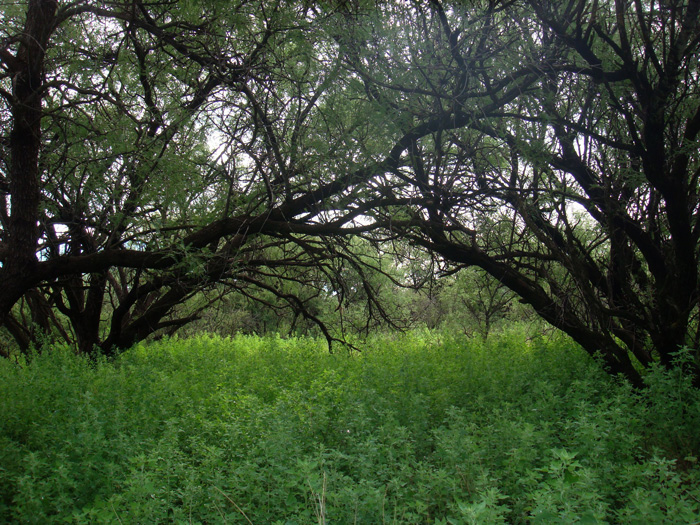CONSERVATION PRACTICES AT RAVEN’S NEST
Habitat Management Zones

1. EDUCATION ZONE


Realizing that buildings in the EDUCATION ZONE serve as natural gathering places for people, we have endeavored to highlight many of the positive environmental changes that people can enact in such high impact areas. Here we have planted and continue to plant native species of trees, shrubs, vines, succulents, and wildflowers, including many edible and otherwise useful plants.
 Our Wildlife Ponds provide many vital resources for the diversity of species at Raven’s Nest Nature Sanctuary. Transplanted native aquatic plants such as Duckweed thrive in the ponds. Wildlife, such as Collared Peccary or Javelina, come to quench their thirst or to cool down during hot days. Birds, including colorful Vermillion Flycatchers seek food in the form of insects hatching from the ponds. Overall, we have created diverse and resilient terrestrial and aquatic habitats, benefiting a myriad of species and serving as model for you to learn from during your visit with us.
Our Wildlife Ponds provide many vital resources for the diversity of species at Raven’s Nest Nature Sanctuary. Transplanted native aquatic plants such as Duckweed thrive in the ponds. Wildlife, such as Collared Peccary or Javelina, come to quench their thirst or to cool down during hot days. Birds, including colorful Vermillion Flycatchers seek food in the form of insects hatching from the ponds. Overall, we have created diverse and resilient terrestrial and aquatic habitats, benefiting a myriad of species and serving as model for you to learn from during your visit with us.




Wildlife Habitat within the Education Zone benefits primarily from rainwater captured by a series of earthen berms and from our 20,000 gallon capacity Rainwater Harvesting System. We have also created Wildlife Ponds nearby that benefit both native plants and wildlife.

2. WATERSHED MANAGEMENT ZONE

Throughout much of Raven’s Nest Nature Sanctuary we have identified the main drainages as the Watershed Management Zone. Here there are no modern structures, only the occasional rustic shade ramada. Instead we’ve sought to identify erosion problems and rectify them with simple, yet effective conservation strategies. In our secondary drainages we’ve built many small check dams, using only the existing soil and rocks found exactly at each spot. These dams are not intended to hold water for any length of time. Rather we use them to slow down or “check” the flow of water so that more goes into the ground and less translates into destructive erosional forces. Both the plants around these check dams and the aquifer at large benefit from these small, but numerous passive water-harvesting structures. We artfully blend these mini-dams into the watercourses so that you may well find it difficult to locate them!

Our largest arroyos – normally dry stream-beds – require more complex conservation strategies. In one of our main arroyos we’ve constructed gavians – water deflectors that slow down and help spread out potentially destructive floods, thus dissipating their force to some degree. The result has been a net benefit to the floodplain Mesquite Woodland that dominates our lower elevations. Now, more trees, as well as other plants, receive more water, more frequently. Erosion has been largely replaced by soil deposition, creating habitat rather than destroying it. When the arroyos do run with monsoon-spawned torrents, it’s now with a healthy braided stream flow.
3. WILDERNESS ZONE

This zone contains some of our wildest acres, punctuated by small and scenic canyons cut by intimate arroyos. Our main goal here has been to maintain and enhance the wild feeling inherent to these areas. Thus, we strive to keep all of our visitor groups to our extensive, yet discreet trail system. Many paths wind through all of various management zones, keeping human traffic out of the most environmentally sensitive areas. This permits a quiet refuge for fragile native plants, breeding birds, denning mammals, and other sensitive wildlife.

Throughout the entire Nature Preserve, we have encouraged native trees, shrubs, perennials, succulents, and wildflowers that are adapted to survive and thrive on rainfall and require no supplemental watering. This has lent a truly wild feel to all parts of Raven’s Nest Nature Sanctuary. Here, wildlife and native plants are the land owners, while we humans are mere visitors.

